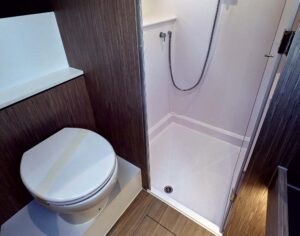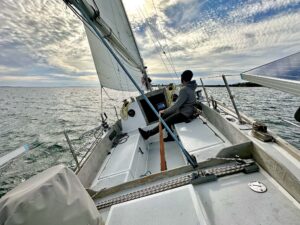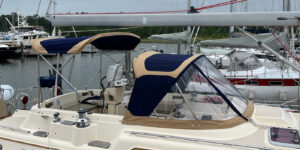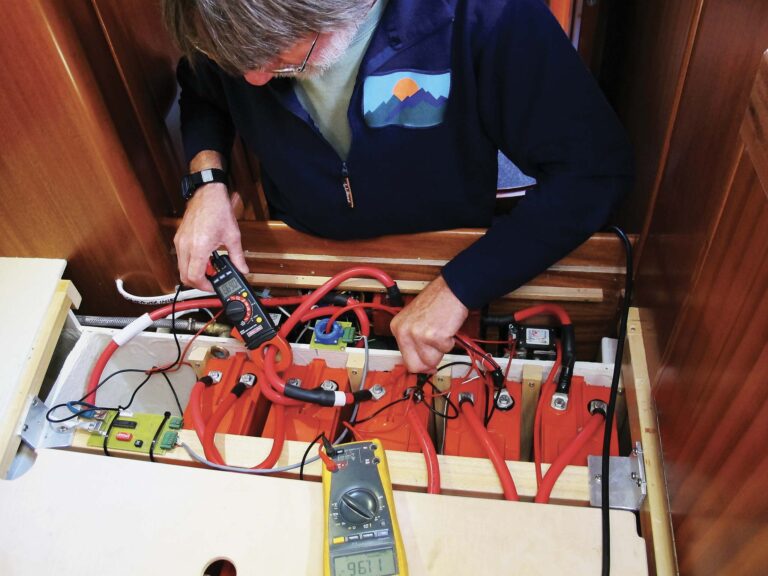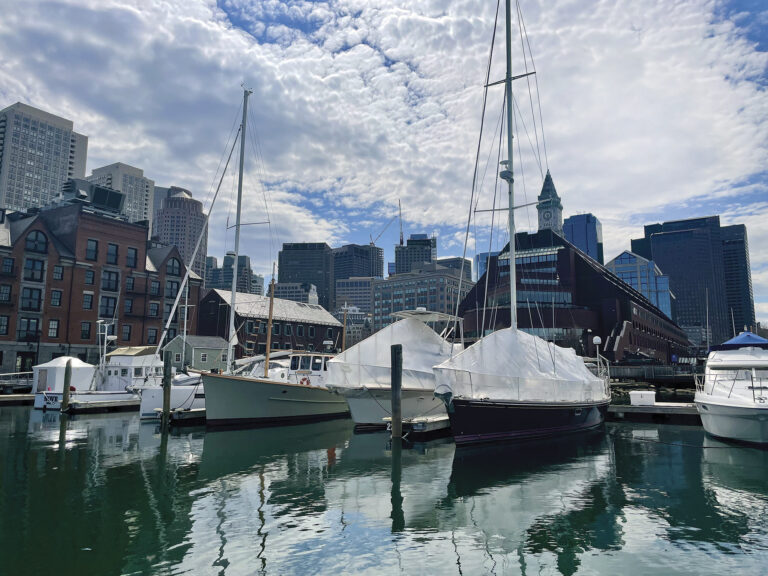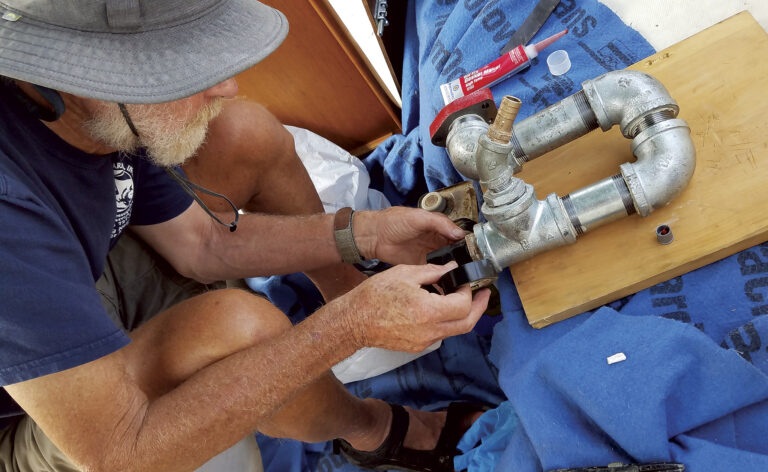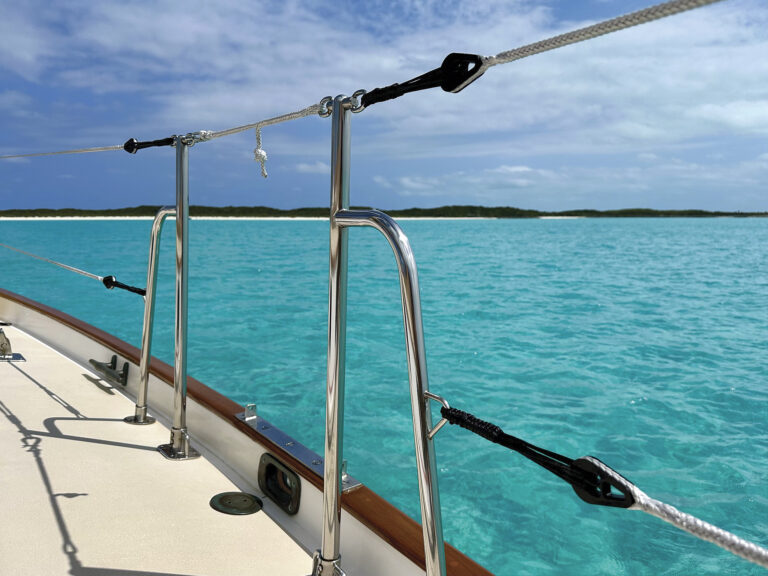
Not surprisingly, given all the changes to antifouling paint in the last few years, such as the loss of some biocides, copper regulation in California and Washington State, raw material costs and new VOC regulations, many sailors have been left wondering, “What’s next?”
Efforts to ban antifouling paints containing Tributyltin (TBT) began in the late 1980s when TBT became a restricted-use pesticide that could only be used on boats of aluminum construction and boats over 82ft in length. Although it still may be available in some parts of the world, antifouling paints containing TBT were ultimately banned in 2008.
Copper has been used in antifouling paints for centuries because it is effective, available and relatively inexpensive compared to other biocides. It is also easy to work with and can be used in many different formulations of antifouling paint. The most common forms of copper used today are cuprous oxide, copper thiocyanate and copper flake.
In antifouling paints, copper compounds are used to control hard fouling, such as barnacles, mussels and tube worms. Copper can also be effective against slime fouling, although it needs a much higher release rate to control slime than to control shell fouling.
Copper began to become a concern in some harbors in California in the 1990s, most notably Marina Del Rey and the Port of San Diego, and studies were undertaken to determine the extent of the problem and determine if remediation was necessary. Eventually, and after much discussion, California decided to continue to allow antifouling paints with a copper release rate of fewer than 9.5 μg/cm2/day (micrograms per centimeter squared). Most of the common antifoulings meet this requirement.
In Washington State, there has also been concern that copper is affecting salmon—a major commercial concern for the area—so legislation banning the sale of antifouling bottom paint containing copper was passed that prohibits the sale of new recreational boats with copper antifouling paint after January 1, 2018. This same legislation will also ban the sale of any antifouling paint containing more than 0.005 percent copper to all recreation boats 65ft and under after January 1, 2020.
That said, “Copper compounds in antifouling paints will be around for a long time,” says John Ludgate, CEO of Pettit Paint, although he adds that “copper-free antifouling paints that use Econea as a biocide have [also] provided excellent protection from fouling in most, if not all, fouling environments.”

With this in mind, a number of paint companies now have products on the market that use Econea (a metal-free biocide manufactured by Belgium’s Janssen PMP) as the biocide and do not contain copper. Pettit, for example, has Ultima Eco and Hydrocoat Eco, while Interlux has Micron CF and Pacifica Plus, and Sea Hawk has what it calls its Smart Solution antifouling.
Along these same lines, to reduce the amount of copper needed to control fouling and be most effective, today’s copper-bearing antifouling paints will also typically include a co-biocide to help control slime. In the past, Irgarol 1051 was the most common co-biocide in use. However, it has not been available since late 2014. The reason for this is that the manufacturer of Irgarol 1051, BASF, decided to move the manufacture of the biocide from Europe to China. This, in turn, required that an EPA inspection is made of the new facility and the product formally tested. However, unfortunately, this process has taken BASF longer than anticipated, although it is hoped that these antifoulings will be back on the market sometime in 2017.
While on the subject of regulation, many sailors may wonder if the Trump administration, which has been outspoken in its disdain for regulation, will enact any dramatic changes in the area of antifouling technology. However, it’s important to be aware that the regulations that impact the industry were not just executive actions but acts of Congress and therefore can’t be eliminated with just the stroke of a pen. Politics aside, it’s interesting to note that in the last 18 months there has also been substantial turnover within the EPA’s professional staff, with a number of retirements. This, in turn, has slowed the approval process a bit as a new generation of staffers gets up to speed.
Where are we headed?
Antifouling paints typically require five to eight years of development and testing to reach the market, including the time to get a new biocide registered with the EPA. This is a long and expensive process. Similarly, it may take a company that manufactures biocides as much as $5 million in testing before it can provide it to the paint companies. On top of that, paint companies have to spend substantial lab time developing formulae and evaluating performance in the field to determine at what level a biocide is effective and what, or if a co-biocide is needed. Nonetheless, new biocides continue to be developed, with one interesting new product now entering the market from I-Tech, a Swedish company that has introduced a biocide called Selektope, which has been approved for use in Europe as well as in Japan, South Korea and China. Selektope works to repel barnacles and is said to work with all current antifouling resin formulations and co-biocides.
Beyond that, according to Jack Hickey, the former Technical Director for Interlux and currently, the owner of Harbor Engineering Consulting, the basic “paint” part of the equation appears destined to remain as-is for a while.
“While there are new biocides being tested and in the process of being registered with the EPA, there is no new resin technology on the horizon to deliver the biocides in a unique way, the way that the TBT copolymers revolutionized antifouling technology,” Hickey explains.
That said, Matt Anzardo, marketing manager for Interlux and Awlgrip, does note that “With changes in the regulatory environment, antifouling paints are adapting to meet the needs of boaters through different biocides and lower VOC products.This could be more water-based or high-solids products as well as different concentrations of active ingredients in the paints.”
The reason for this is that as part of the Clean Air Act, the EPA developed the Control Techniques Guidelines (CTGs) for Miscellaneous Metal and Plastic Parts Coatings, which includes pleasure craft as part of an effort to reduce the emission of volatile organic compounds (VOCs) from paint. According to the guidelines, while states can develop their own regulations, the upper limits for VOCs in antifouling paints are now limited to 330 or 400 grams per liter (depending on the state) and 560 grams per liter for antifouling paint used on aluminum. Paint companies have used various methods to reach these goals, including water-based formulations, high solids or the use of exempt solvents.
Not surprisingly, this has required a good deal of work on the part of antifouling manufacturers. However, on the plus side, Pettit’s Ludgate says that “While water-based technology for antifoulings has not been the easiest to work with, it has had great market acceptance with many customers now preferring to use water-based coatings.”

Costs
Raw material costs are always of concern when talking about overall costs of an antifouling paint. Most raw materials used in antifoulings are sold on the commodities market and the prices fluctuate with demand. For instance, copper sold in 1994 for about $0.75 per pound, but by 2011 the price had spiked to $4.50 per pound and today it is selling for just over $2.60 per pound with prices expected to grow as the economy improves. Most antifoulings will contain about 6lb-8lb of cuprous oxide, so copper prices are a major concern. It is expected that as the economy improves, the cost of all the raw materials will rise.
Another one of the hidden costs of antifouling paints is that once you have a registration from the Federal EPA, you must also register in every state where you want to sell them. (Some states require as much as $500 per color and additional testing beyond what the Federal EPA requires.) In fact, the cost of keeping state registrations has seen a tenfold rise in recent years, and as more states are looking for additional income the cost will go up again.
Beyond that, there are several companies that have products on the market that claim antifouling performance with no biocides. Most of these employ a silicone or Teflon-like coating. Others will be based on nanotechnology.
Several of these, such as Prop-Speed and Glidecoat, are for running gear and props. Interlux also introduced a foul-release coating called Intersleek Pro a couple of years ago, which has been highly effective, albeit with some caveats. Specifically, according to Interlux’s Anzardo, “Intersleek Pro has proved to be an excellent product, but it is not for everyone. It has been used by racing sailors looking to gain some speed, but the expense of application, cleaning and special handling requirements has held it back.”
Yet another example is McLube’s Antifoul Alternative, a product that has been especially popular among racers, including teams in the Volvo Ocean Race.
Moving forward, expect the trend toward biocide-free bottom paints to continue as the costs of development, testing and registration continue to climb and create a barrier to entry in the antifouling market. The technology will only get better and less expensive over time.
Ultimately, don’t expect great changes to antifouling technology over the next five years (although sailors will likely see some new VOC-compliant coatings, mostly water-based, arrive on the market using biocides that are currently available). In 10 years, on the other hand, expect to see biocide-free bottom paints and new biocides that do not use heavy metals and break down quickly in the environment.
As is the case now, the different compounds and formulations will undoubtedly be carefully tailored to the various products in which they are found, so that they match the specific needs of a range of sailing styles—whether it be Grand Prix racing, daysailing or cruising the Caribbean.

Resources
Interlux/AkzoNobelyachtpaint.com
McLube mclubemarine.com
Pettit Marine Paint pettitpaint.com
Sea Hawk Paints seahawkpaints.com
James Seidel has been a part of the marine industry for over 40 years. Since retiring as the marketing manager for the Interlux and Awlgrip brands he has been working as a consultant and writer
Photos courtesy of Akzonobel/Interlux
April 2017


